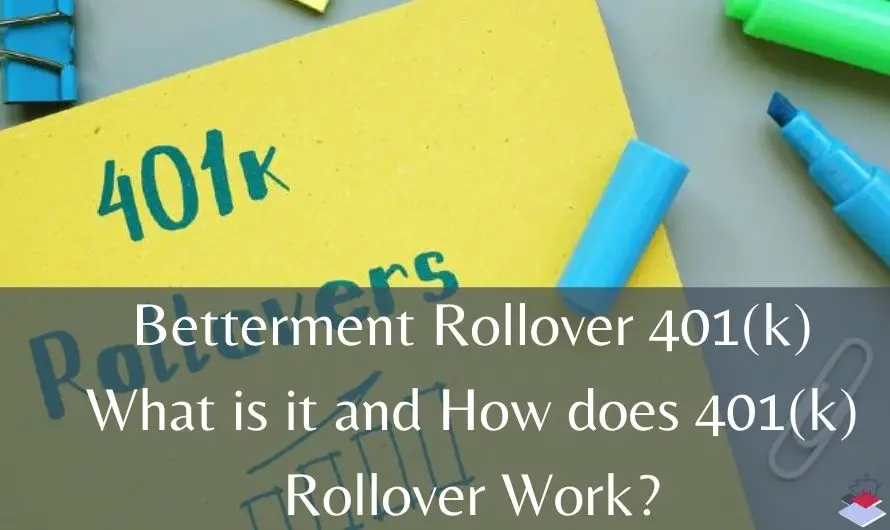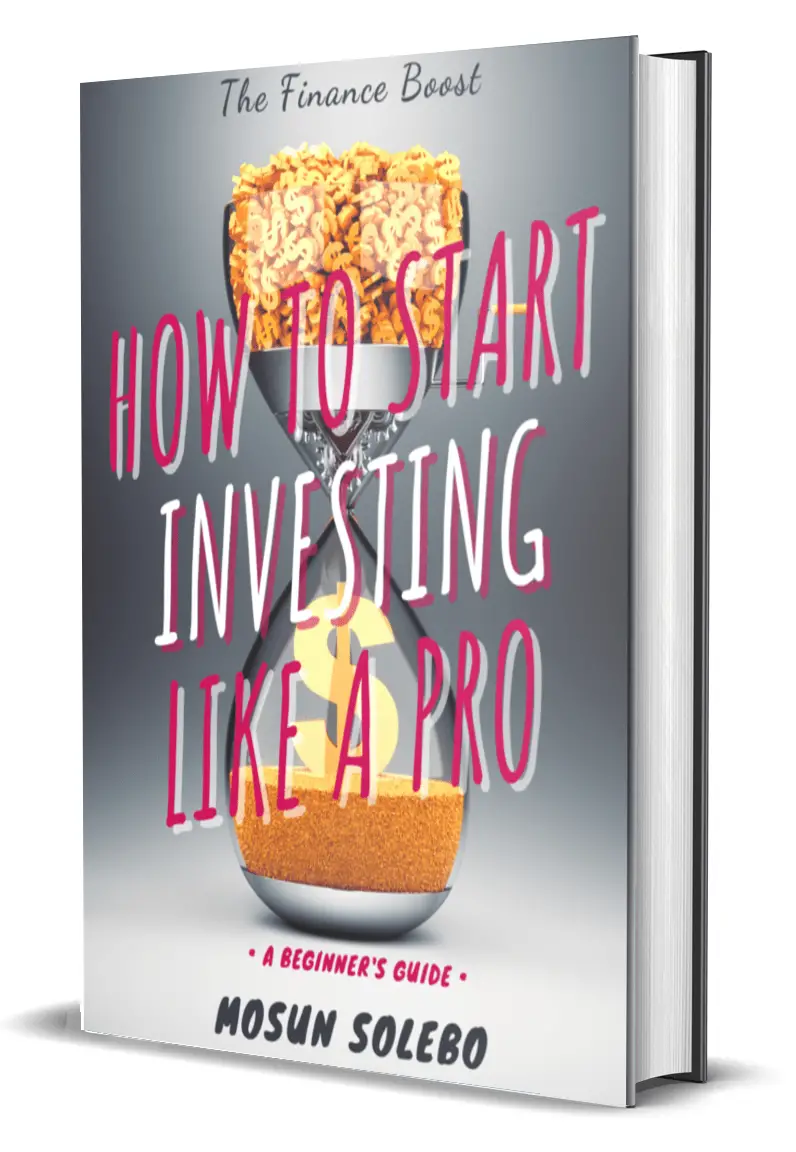Are you considering rollover your 401(k) into a Roth or Traditional IRA?
This post will guide you.
Moreover, we’ll teach you how it is done using one of the sought-after Robo-advisor today, the Betterment app.
So, get ready to roll!
Related: Saving for retirement without a 401k? Here are the best alternatives.
What is a 401(k)?-Quick Recap

A 401(k) is an employer-sponsored retirement account. It allows both you and your employer to contribute money towards your retirement. In addition, it’s primarily replaced pension plans (where your employer was the one responsible for how much you receive after retirement)
But, note that not all employers match your contributions to a 401k, and the match varies per employer.
However, it is still a great way to start saving for early retirement. It’s even better when the money is deducted from your paycheck before you see it.
Hence, 401(k) is one of the most common retirement accounts. Typically, you must have a job or an earned income to be eligible for it.
Moreover, it is one way most Americans save for retirement. Yet, while it’s fairly accessible, many still struggle to have one.
Read more content:
- How to Open a Roth IRA Account? Simple and Easy Beginner’s Guide.
- Best Retirement Plan For Self-Employed: 7 Low-Cost Retirement Plan.
- Index Funds for Roth IRA- 3 Easy Ways to Start Index Investing
How does 401k rollover works?
Whether you’re off to a new job or preparing for retirement, you need to do something about your 401(k).
So how do Betterment Rollover 401(k) works? Here’s how to deal with it.
1. Leave it as is
You can leave your 401(k) with your previous employer as it is. There is nothing wrong with that. However, you may be charged a higher fee for account maintenance if you do it. Not only that, you’ve lost the privileges of HR team support to help you with your inquiry.
Moreover, keeping it and doing nothing will incur an opportunity cost for your funds to be invested elsewhere, where your money could grow.
2. Rollover into a New or Current Plan
If you’ve got a new job, this is probably your next course of action. Roll over the money to your new employer’s plan if the plan accepts a transfer.
3. Rollover into IRA- Roth or Traditional
For most people, this is the best choice. You can roll your money into an Individual Retirement Account or IRA.
4. Take the Cash Value
This is the least recommended option because cashing out your account may be simple but is costly. You will most likely incur fees and early withdrawal penalties.
For example, you’ll have to pay a 10% early withdrawal fee because the IRS will consider your payout an early distribution. This is on top of other taxes such as federal, state, and local taxes on the amount distributed.
Overall, this could mean you might hand over up to 50% of your account value right off the top.
In general, rollover 401(k) means that you will move or directly transfer your funds from your 401(k) to another tax-advantaged retirement plan. For instance, a new 401(k) from your new job and employer or to an IRA. This is so that it will continue to be invested in other securities, allowing you to grow your money and earn retirement income.
Now what?- Betterment Rollover 401k

With the first three options, you won’t lose your money. It includes all the contributions you made, your employer’s matched contribution, plus any earnings you’ve accumulated in your old 401(k).
Furthermore, your money will maintain its tax-deferred status until you withdraw it.
Therefore, you have at least 30 days to decide what to do with your 401(k) when you switch jobs. And the IRS gives you 60 days to process your rollover 401k from the date you receive an IRA or retirement plan distribution to roll it over to another plan or IRA.
Failing to comply will incur higher fees, such as a 10% early withdrawal penalty, which could cost you a lot. So, better to keep it rolling!
Places to rollover your 401(k)
There are (2) two general places where you could park your 401(k) plan.
- Online broker– Ideal if you want a DIY or Do-It-Yourself approach to investing. Take note of fees as this could affect your investment budget. Moreover, look for an online broker or trading platform with exceptional customer service that offers a wide array of low-cost investment plans for diversification purposes.
- Robo-advisor– A robo-advisor makes sense if you want a fund manager to do the hard work for you. More likely, a robo-advisor’s complex algorithm will help choose the best investment for you and can even help automatically rebalance your portfolio. Today most robo-advisors are downloadable app that charges little to no commission fee and allows you to buy fractional shares of stock.
How To Rollover Your Old 401(k) To An IRA At Betterment
Is your old 401(k) costing you? Don’t let high 401(k) fees drain your savings.
This is the typical process of rolling over your 401(k).
1. Choose a rollover account type plus rollover provider.
If you have an existing IRA, you are free to move the balance into it. However, to avoid complications, it is much better and highly recommended to transfer it into a new account.
There are two main types of IRA, namely the Traditional and Roth IRA. Moreover, the primary difference between the two is their tax treatment.
Traditional IRA– Rolling over into a Traditional IRA means you won’t pay taxes on the rolled-over amount until retirement.
In general, Traditional IRA contributions are pre-tax, but you pay tax when you withdraw.
Roth IRA- Funded with after-tax money. It means that you won’t pay any taxes on the money you take out in retirement once you hit age 59 1/2.
Rolling into a Roth IRA means you’ll pay taxes on the rolled amount unless you’re rolling over a Roth 401(k).
Keep in mind that the IRS has income and contribution limits set for Roth and Traditional IRA.
In choosing a rollover provider, you can choose between opening an account through an online broker or a Robo-advisor.
2. Start rolling!
Once you’ve figured out what type of account you want and where you want to open it, you can start the rollover process.
You may talk to your previous plan administrator to make sure you don’t have any plan limitations and get the necessary forms that you’ll need to fill out and verify with your information from your new IRA account.
Next, contact your new IRA company representative to ensure that your account is opened and ready to receive funds. Then get the information from them that you need for your forms from the old 401(k) provider.
So the best process is to open an IRA work with your old 401(k) plan administrator to do a direct rollover of funds to your new IRA. As easy as 1, 2, 3.
How do I transfer my 401k to betterment?

Betterment is a Robo-advisor automated investing platform. It is also one of the largest and most popular Robo-advisors. Furthermore, Betterment allows you to roll over your 401(k) and automatically rebalance your investment portfolio.
Betterment offers different assets and a wide range of diversified investments. Most common is that if you’re interested in social impact investing, Betterment can cater to these need and add it to your portfolio.
The Betterment’s funds are low-cost and can even allow you to buy fractional shares, so all your money is invested and working for you.
You can also open a comprehensive cash management account that offers a competitive interest rate.
The general rule is to roll over only Traditional funds into a Betterment Traditional IRA and only Roth funds into a Betterment Roth IRA. Rolling over an IRA, 401(k), or any similar plan into Betterment is generally straightforward, painless, and without any adverse tax repercussions.
Direct Rollover vs. Indirect Rollover
Here’s the Betterment rollover process:
For rolling over 401(k)s, they use the direct rollover method to avoid withholding funds from your current provider.
The process involves your current provider sending Betterment a check of your 401(k) funds directly (instead of going through you).
You must fill out one or two simple forms from your current provider, and Betterment will assist you through the entire process.
On the contrary, Betterment uses the indirect rollover method for rolling over IRAs for ease.
This means that the funds go through you. You simply request a full early distribution from your current provider and then re-deposit those funds into your Betterment IRA within 60 days. As long as you complete the rollover within this period, there are no penalties for doing so.
Benefits of Betterment Rollover 401k
Betterment rollover 401k offers simple, efficient, transparent, automated, individualized processes.
They have a variety of low-cost funds to get started investing, plus they have dedicated customer service and support.
The corresponding investment strategy aligns with your specific retirement plan when setting up a Betterment rollover 401k or IRA. It can even work in coordination with the rest of your retirement funds. Not only does the website itself provide you with personalized financial advice, but they also have a team of financial experts and advisors.
Betterment doesn’t have a fee schedule or hidden fees. They don’t charge you to open or close accounts, make withdrawals, change your allocation, etc. The low-cost investments (ETFs) they invest in are among the lowest in cost of funds available for investors.
You can open up a Betterment rollover 401k or IRA in just a few clicks and instantly receive instructions via email. What’s great is that there is zero paperwork involved!
Things to consider when rollovering a 401(k) or any retirement plan:
There are three (3) key points to remember:
Cost
How much would it cost you to roll over your 401(k) or other retirement plans into another new plan? Ensure to research online broker’s fees. And if you will use a Robo-advisor, check how much it would cost to use the service. Is it a subscription-based app?
More importantly, ensure that your investment amount aligns with your set budget.
Transaction fees
Concerning cost, be aware of charges or any other hidden fees along the way. This may be initially in smaller amounts, but it can add up and may cost you a lot over time.
Investing Goals and Strategy
Lastly, ask yourself. What are my investment goals and strategy? How can I implement it?
Are you in it for the long-term or short-term? What is your risk tolerance?
Above all, much like personal finance, you must also do investing on a personal level.
Know your goals, and don’t just blindly invest. Yes, you may have a financial advisor, but it’s better if you know what you’re doing.
Pros and Cons of Betterment Rollover 401k
| PROS | CONS |
| If you roll over your 401k into an IRA, it is 100% entirely yours and not your employer’s. | While your money remains in your former employer’s 401(k) plan, you won’t be able to make additional contributions to the account. |
| It will be easier for you to track your assets’ performance. | You may not be able to take a loan from the plan. |
| Access to a broader range of investment options and possibly a much lower cost in fees than what your 401k provides. | If you leave your 401k as is, some employers might charge higher fees if you’re not an active employee. |
| You will know where you stand financially, and you can consolidate your asset. | |
| Flexibility and customization- you can pick the IRA plan that works best for you. |
FAQs
Can I roll an old 401k into Betterment?
Yes, you can.
All you have to do is open up a Betterment rollover 401k or IRA in just a few clicks and instantly receive instructions via email.
There is complete instruction for proceeding with your rollover in the email.
The instructions will outline the exact next steps and the information you need to complete your rollover.
This includes your unique account number, how your provider should make your rollover check payable, and where they can mail your rollover check.
Some providers may require you to either fill out their rollover paperwork or even ask you to give them a call to complete a rollover. If so, there’s no way around that. However, using the personalized email that Betterment sends you, you can give your 401(k) provider a call, and you’ll have all of the information they’ll ask you for right at your fingertips.
Lastly, Betterment will notify you via email when your rollover funds are invested into your Betterment IRA.
Can I roll over my entire 401k?
Of course, you can—moreover, not just 401k. You can rollover any employer-sponsored plan that you hold from past employment. This includes pensions, 401(a)s, 457(b)s, profit-sharing plans, stock plans, and Thrift Savings Plans (TSPs)
Additionally, you have a number of direct rollover options: for example, rollover of Traditional 401k to a Traditional IRA. You can also roll over your Roth 401k to a Roth IRA. Lastly, you can roll over Traditional 401k to a Roth IRA.
Just ensure to complete the forms required by your chosen IRA provider and your past 401k administrator. Then, the money is moved here either electronically or via check. Keep in mind also that you’ll have to pay taxes on the rollover amount you convert.
What is the difference between a rollover vs. transfer of assets?
A rollover means you move funds from another retirement plan—for example, your 401k plan into IRA. You must report the rollover distributions to IRS and choose how to do it, either direct or indirect rollover. Moreover, you must understand these options and their tax consequences.
On the other hand, a transfer of assets means moving funds directly between two same account types. For instance, moving your funds from Traditional IRA to another Traditional IRA. You can transfer assets anytime and as much as you like; they are not reported to IRS because you never take possession of your money.
Final thoughts
Leaving your 401k with your old employer is like leaving your wallet at your ex’s house.
Don’t let it sit there doing anything!
Besides, an estimated 24.3 million 401k accounts and $1.35 trillion in assets have been left behind by job changers. Leaving behind a forgotten 401k could cost an individual $700K in foregone retirement savings over a lifetime.
If you’ve ever rolled over a 401k from an old job, you know how tedious or awful the whole process can be. But, thanks to Betterment, they’ll do the legwork for you.
Have you tried to roll over your 401k?










0 Comments
Trackbacks/Pingbacks